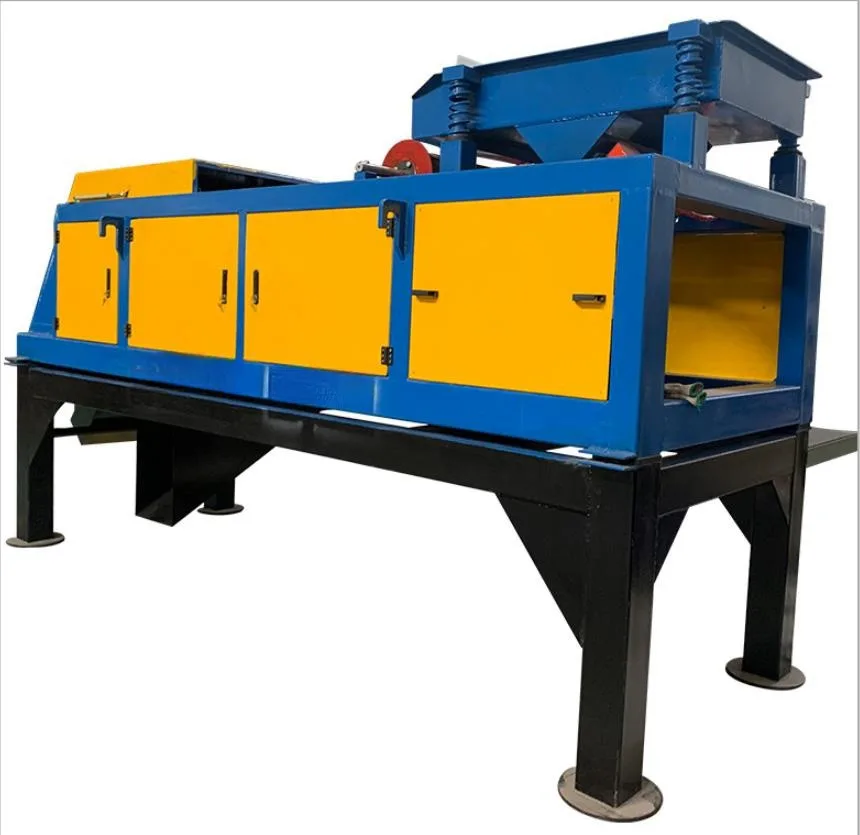
Mineral processing is a material step in the of worthy metals and ores from the earth. A wide range of techniques is exploited to part worthful minerals from run off material. One such technique that has verified effective and competent in the of minerals is the gyrate parachute. This solemnity-based legal separation is unremarkably used in the minelaying manufacture to separate minerals of different densities and sizes. In this clause, we will research how the spiral parachute workings, its advantages, and why it is widely regarded as an efficient tool for mineral concentration. magnetic separator.
What is a Spiral Chute?
A gyrate chute is a solemnity legal separation equipment used for mineral , premeditated to separate fine particles supported on their density and size. The gyrate jump consists of a sloped, spiral public treasury that moves minerals in a downward spiral, using centrifugal forces to separate heavier materials from light ones. As the slurry of irrigate and minerals flows down the parachute, denser materials tend to move toward the inner part of the gyrate, while lighter materials are carried outward. This separation work on allows for the of worthful minerals, such as gold, silver, iron, and atomic number 74.
The design of the gyrate jump typically features a volute form, allowing the material to undergo tenfold stages of separation in one persisting pass. This makes the work highly competent for handling large volumes of ore.
How Does a Spiral Chute Work?
The surgical process of a gyrate parachute is simpleton yet effective. It workings based on the principle of solemnity legal separation, where the stuff particles are subjected to outward-moving and gravitational forces as they trip down the spiral path. Here’s how it works:
-
Feed Material: The slurry of material ore is fed into the spiral chute at the top, often with water to create a temporary removal. The material particles vary in size and denseness.
-
Flow Down the Spiral: As the slurry moves down the coil, the denser minerals move inward toward the focus on of the spiral, while the light materials move toward the outer edge of the coil.
-
Separation: Due to the centrifugal force created by the whorled gesture, the denser minerals see greater centrifugal force and subside deeper in the coil. The igniter particles are pushed to the outside, where they can be cast-off as waste or further refined.
-
Concentration: The result is a separation of the material into different streams, with the more worthful or higher-density minerals collected at particular points in the gyrate jump for further processing or .
-
Discharge: Once the legal separation work on is complete, the concentrated minerals can be distant from the spiral jump, ready for further refining, while the tailings or run off stuff are unwanted.
Advantages of Spiral Chutes in Mineral Concentration
Spiral chutes offer several advantages when used in stuff concentration:
1. Cost-Effective
Spiral chutes are relatively two-a-penny to fabricate and run. Compared to other material legal separation methods like flotation or shaking tables, coil chutes do not require high-priced reagents, physics parts, or day-and-night sustentation. Their simple mindedness and low cost make them an attractive pick for small trading operations or for use in junction with other processing techniques.
2. Environmentally Friendly
Unlike chemical substance-based processes, such as flotation, spiral chutes rely entirely on solemnity to separate materials. This makes them environmentally friendly since they do not need pernicious chemicals or return noxious by-products. The irrigate used in the system can also be recycled, reducing water expenditure and situation bear on.
3. High Efficiency
Spiral chutes are known for their high legal separation efficiency, especially for fine materials. By utilizing the of centrifugal squeeze and gravity, they can effectively split minerals with different densities and sizes, even in stimulating conditions where other methods might struggle.
4. Low Maintenance
The design of spiral chutes is simpleton and unrefined, requiring nominal sustenance. With no complex animated parts, the likeliness of mechanical unsuccessful person is low. This enduringness ensures that the system of rules corpse work with little , providing a trustworthy method acting of mineral concentration for sustained processing.
5. Scalability
Spiral chutes are ascendable and can be used in moderate-scale operations or organic into big heavy-duty processing plants. They can be organized in twin to handle higher capacities, making them whippy and elastic to varied levels of stuff product.
6. Versatility
Spiral chutes can wield a variety show of minerals, including ores containing gold, W, tin, copper, and iron. This versatility allows them to be used across different mining industries, from precious metals to industrial minerals.
Applications of Spiral Chutes
Spiral chutes are used in a wide straddle of material processing applications, including:
- Gold Processing: Spiral chutes are often used in gold recovery, particularly for separating fine gold particles from ore.
- Tungsten, Tin, and Other Ores: Spiral chutes are extremely effective in separating tungsten and tin ores from other materials due to the substantial denseness difference between the worthy minerals and gangue.
- Iron Ore Processing: In iron ore processing, gyrate chutes are used to reduce iron ore by removing impurities.
- Heavy Mineral Sands: Spiral chutes are ideal for separating minerals like rutile, zirconium silicate, and ilmenite from heavy stuff sands.
Conclusion
The coil chute is a extremely effective and cost-effective tool in the field of mineral concentration. Its simplicity, low cost, and environmental benefits make it a popular option for miners looking to part valuable minerals from gangue material. By utilizing the principles of solemnity and centrifugal squeeze, gyrate chutes are susceptible of achieving high separation efficiency and are appropriate for a wide range of applications, from small-scale trading operations to big minelaying projects. With its evidenced performance and adaptability, the spiral parachute continues to be an requirement piece of equipment in material processing and will likely remain so for age to come.
